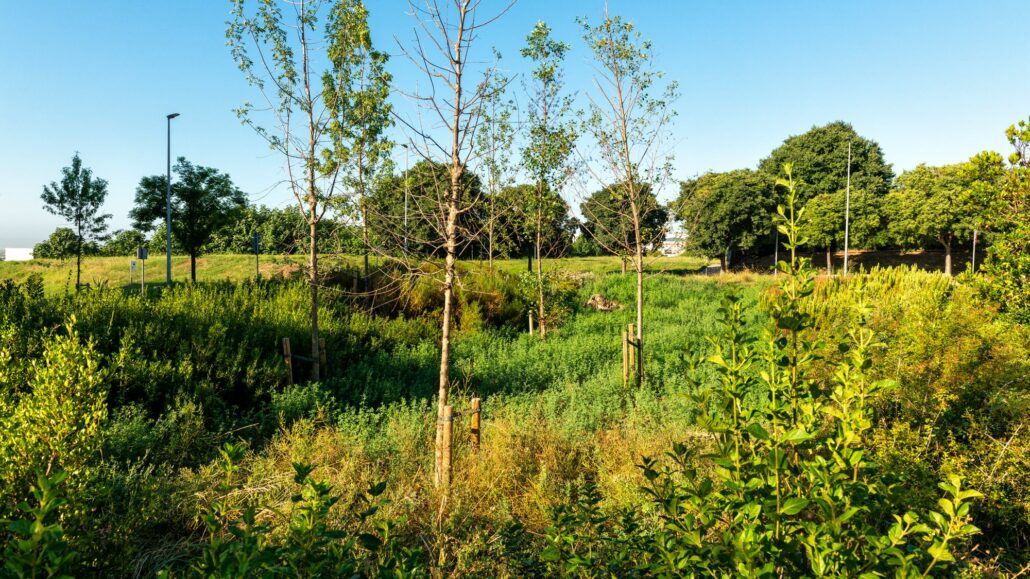Text: Ștefan Ghenciulescu
Photo: SCOB
The adjoining photo shows one of the projects in the dossier of the summer issue of Zeppelin magazine no.166. To be honest, it doesn’t look much like architecture. In fact, it looks like something that can be a corner of nature, or a greenfield, or some generic greenery, rather self-sown.
It could be anywhere.
In fact, it is where you would least expect it, namely part of a landscaping for a roundabout. It is designed by architects and landscapers (SCOB + EXMF) and is somewhere in Catalonia, where everything public space is taken very seriously. For those who will rush to gibe on how the much-too-manicured West is rediscovering the charm and value of the barrens (of which we have too many), the eco-bio hispterisms, etc., I’ll rush to add that this is a serious and intelligent project. Spain is suffering from lack of water, and any plantation needs to also be designed from this point of view. So the lawn, pansies and other such layouts appear even more obviously as wrong. I won’t go into details, you have the description of the project in the magazine. The essential idea is that the new relief, the choice of species and how they are planted creates an area where water is retained and then redistributed – without any type of equipment.
The small green space is practically self-sustainable, it evolves, it becomes part of the surrounding ecosystem which includes dwellings, but also green spaces and fields. Infrastructure somewhat becomes a part of the environment, not just an aggressive factor.
We, for various reasons, including our historical and cultural frustrations (“peasant” in Romanian is also an invective, even for those parading traditional shirts and national(ist) poems), are still allergic to such approaches. We are also so sick and tired of the chaos and scraping that characterise our built environment, that we yearn for order, rules… It’s only natural. But this also leads to the thuja garden obsession for dwellings and to hyper-landscaped parks, to the dream of complete control over the fauna and flora in the cities and in the surrounding areas. It’s just not really possible, but it seems it’s not good, either. We must re-learn what we used to know rather well: that the city is also part of the environment, that instead of denying or fighting, you’d better see about subscribing to a collaboration with nature (well, yes), how to think in terms of accentuation, influencing, limitation, system, and resource management.
This is pretty much what nowadays’ intelligent landscaping is all about, not greenery decoration. And, no matter how much I personally dislike any organicist, pseudo-bio stylistics, I believe in equal measure that architecture should also assume its part in a process of reconciliation and responsibility.


